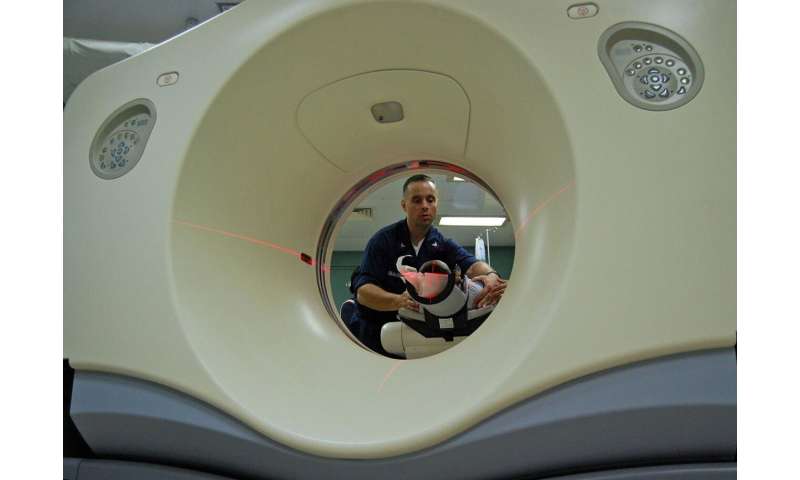Whole body scans for trauma patients saves time spent in emergency departments


Ever sat in an ambulance or crowded emergency room with a loved one who has sustained serious injuries, waiting for a scan as precious life-saving minutes tick by?
This scenario is common in most hospitals around the world, leading to long queues and ramping issues with paramedics having to often care for critically ill patients in the interim.
A new study by a University of South Australia medical imaging student may have found a partial solution: imaging trauma patients with whole body CT (WBCT) scans which are a lot faster and more accurate than conventional radiology procedures.
In a recent paper published in the European Journal of Radiology, Elio Arruzza and his co-authors found that WBCT drastically cut the time spent in emergency departments as the procedure is far quicker than the traditional method of x-rays, ultrasound and selective CT scans of individual body regions.
WBCT is broadly defined as a CT scan of the head, cervical spine, chest, abdomen and pelvis.
The superior diagnostic accuracy of WBCT also makes it less likely that injuries are missed or even misdiagnosed, which happens with conventional imaging in up to 39 per cent of cases, Arruzza and his co-authors found.
However, WBCT imparts more radiation dose than other imaging procedures or non-WBCT, which clinicians, patients and families need to consider when weighing up the options.
In a meta-analysis of radiological procedures, Arruzza reviewed 14 studies comparing WBCT outcomes with conventional radiological procedures, or non-WBCT. While mortality rates, intensive care unit and hospital length stays were similar, time spent in emergency departments was significantly reduced.
“Our findings show that patients presenting with traumatic injuries can be diagnosed a lot faster with WBCT and therefore treated more quickly. This could in turn potentially reduce the impact of emergency department overcrowding, or ramping, which is a major problem in Adelaide and nationally,” Arruzza says.
“Much like the saying ‘time is brain’ in terms of stroke patients, ‘time is life’ for trauma patients. With expected improvements in the technology, we not only expect faster times but lower radiation doses as well.”
While the evidence suggests there is little difference in mortality rates between WBCT and non-WBCT, Arruzza says this is due to WBCT being reserved for critically ill patients.
“Less severely injured patients are still being scanned via the traditional X-ray, ultrasound and selective CT procedures so it is difficult to compare what their progress would be like if they received a full body scan,” he says.
More than five million people die from traumatic injuries each year, accounting for nine per cent of global mortality and the leading cause of death among people under the age of 45.
Source: Read Full Article